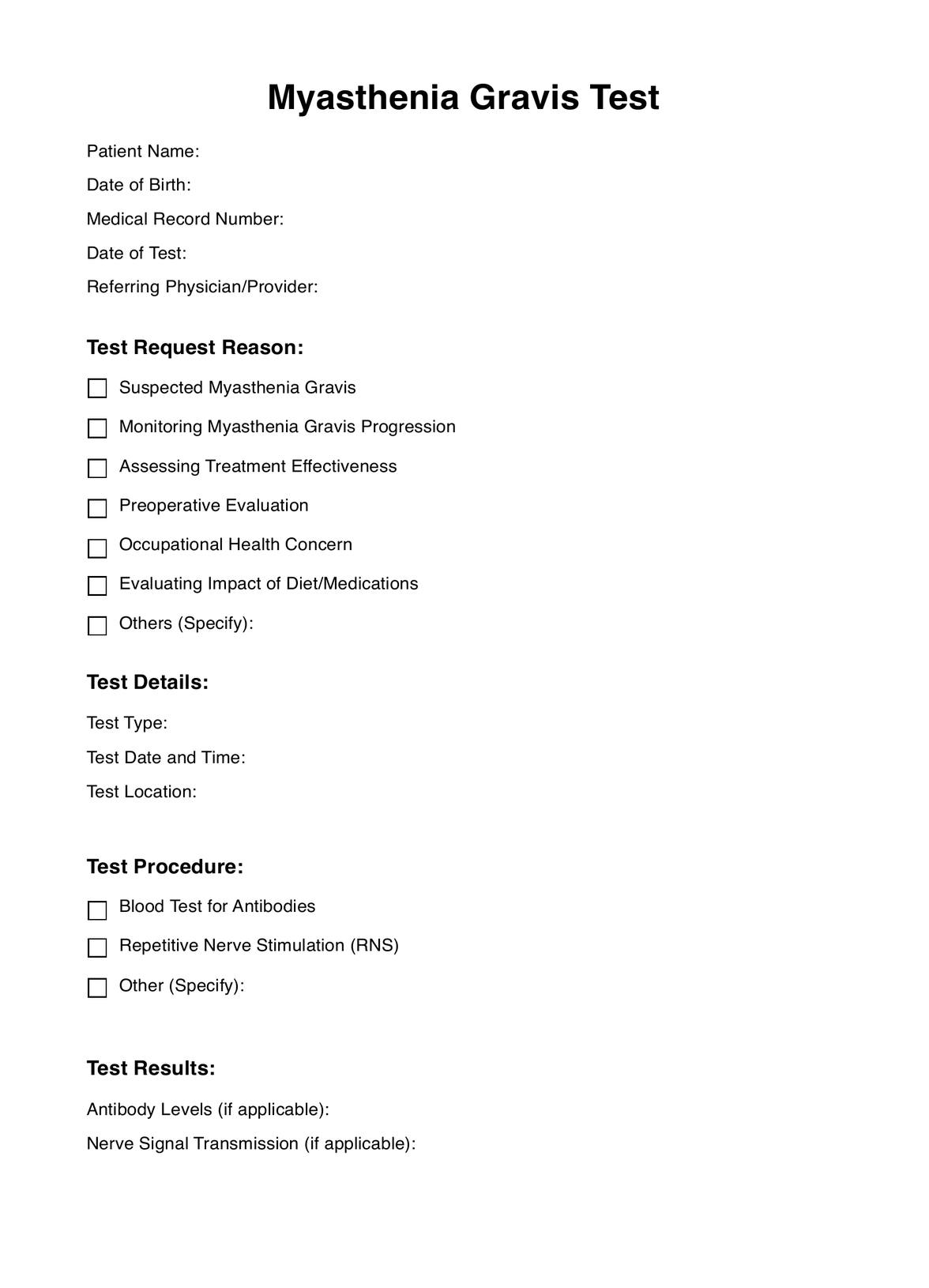Neurologists, neuromuscular specialists, and primary care physicians usually ask Myasthenia Gravis Tests when they suspect the condition or need to track its progress.

Explore myasthenia gravis test, its role in healthcare, and discover valuable insights to guide patient well-being in this comprehensive guide.
Neurologists, neuromuscular specialists, and primary care physicians usually ask Myasthenia Gravis Tests when they suspect the condition or need to track its progress.
Myasthenia Gravis Tests are used for diagnosis, monitoring, checking treatment effectiveness before certain surgeries, for occupational health concerns, and to evaluate the impact of diet and medications on neuromuscular health.
These tests usually involve blood tests to detect specific antibodies and repetitive nerve stimulation to assess nerve signals. Abnormal results can indicate Myasthenia Gravis, leading to further tests or treatment changes.
EHR and practice management software
*No credit card required
Free
$0/usd
Unlimited clients
Telehealth
1GB of storage
Client portal text
Automated billing and online payments